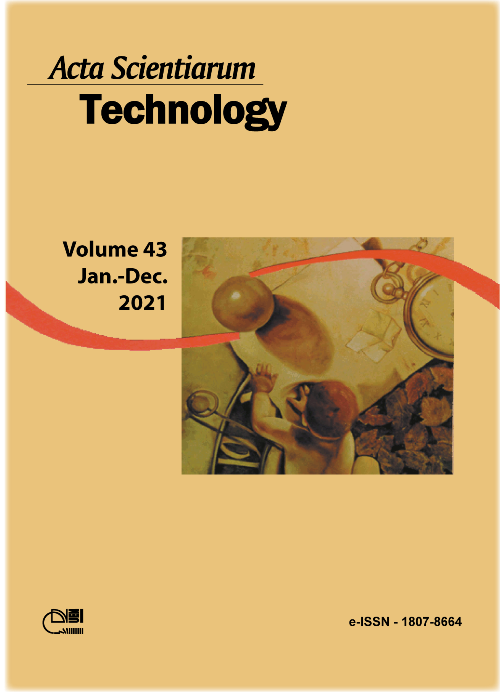Performance of photovoltaic generators under superficial dust deposition on their modules derived from anthropogenic activities
DOI:
https://doi.org/10.4025/actascitechnol.v43i1.50101Keywords:
solar power generation; photovoltaic systems; dust effect; particulate matter; performance evaluation; urban pollution.Abstract
Performance of photovoltaic generators is affected by, among other factors, surface dust deposition on photovoltaic modules, which causes uniform soft shading, reducing the solar radiation reaching photovoltaic cells. Several researches have demonstrated this effect through studies in specific localities. As deposition of particulate matter varies according to locality, these results cannot be generalized or used in other places, since these studies do not characterize their local dust. Considering these research opportunities, this paper evaluates the deposition effects on photovoltaic modules by different types of dust from anthropogenic activities recurrent in urban areas, a typical situation of distributed microgeneration. Particulate matter of iron ore, building construction, quarry, and mineral coal are characterized morphologically and dimensionally. Then, their effects on photovoltaic module performance are analyzed under different deposition densities according to typical urban deposition rates. The results show that the different dust materials studied attenuate the power generation capacity to different extents, and superficial dust density of the particulate matter also produces different effects. These results can be used in performance and economic feasibility analyzes of photovoltaic generators in different locations with similar pollution characteristics.
Downloads
Downloads
Published
How to Cite
Issue
Section
License
DECLARATION OF ORIGINALITY AND COPYRIGHTS
I Declare that current article is original and has not been submitted for publication, in part or in whole, to any other national or international journal.
The copyrights belong exclusively to the authors. Published content is licensed under Creative Commons Attribution 4.0 (CC BY 4.0) guidelines, which allows sharing (copy and distribution of the material in any medium or format) and adaptation (remix, transform, and build upon the material) for any purpose, even commercially, under the terms of attribution.
Read this link for further information on how to use CC BY 4.0 properly.



















8.png)




